It is time to harvest tomatoes. You can peel plain tomatoes and freeze or can them. You can also make salsa or tomato sauce and have them to use all winter. One of my favorite uses for tomato sauce is to top chicken parmesan. The sauce does not need to be fancy; tomatoes, salt, pepper, maybe a few herbs and garlic if you have it. You can make a large batch for your chicken parm and freeze the rest for later use. I like freezing in small containers, then when I need some sauce, I can pop the frozen sauce onto a cutting board and cut off what I need. You can make a large batch of sauce and preserve in your preferred method to have great tomato sauce long after the season.
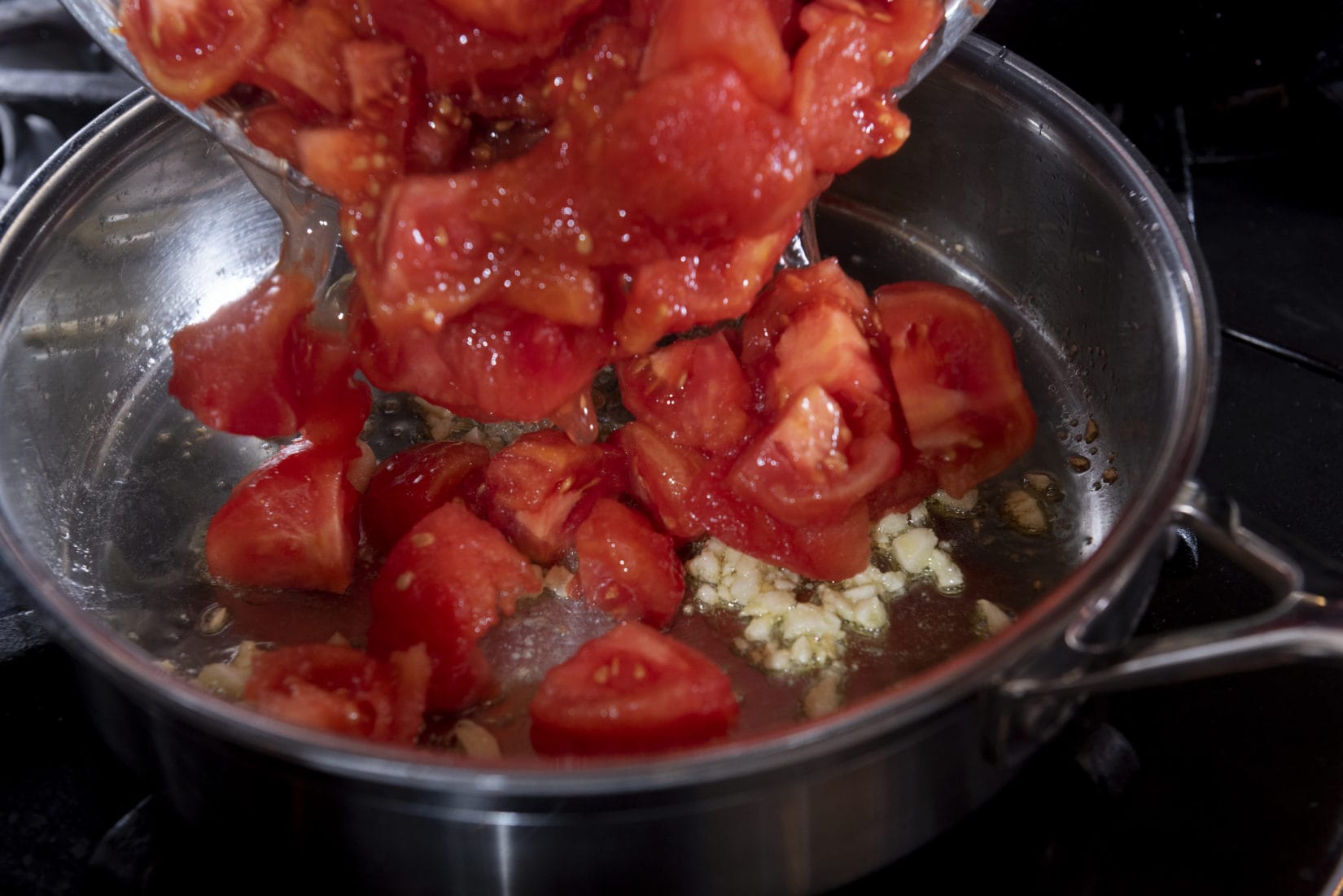
Tomatoes
I like a chunky sauce, but you can easily take this method and blend the sauce at the end with a hand blender or stand blender. You don’t necessarily have to pick or purchase the tomatoes ripe. Animals are also looking for tomatoes to eat when the tomatoes are ripe on the vine. I like to get them a little under ripe before they split or something else finds them. A few days in a safe, shaded place in the kitchen is all it takes to ripen the tomatoes. I check them every day and pick out the ones that are ready to use or process. I cut the tomatoes in half and take out the core right where the stem connects. Place the tomatoes cut side down onto an oven-safe dish. Place them under the broiler on high or into a 450° oven. Under the broiler, you are looking for some blisters and the skin to show signs of separating from the tomato. In the oven, you will just see the skin start to separate and maybe even start to pop off (the steam between the tomato and the skin can cause it to rise). I like to let the tomatoes cool for 5 to 10 minutes while gathering my other ingredients. You can use this method to remove the skin if you are going to can or freeze the tomatoes.
Sauce
I keep it pretty simple; the flavor of the tomatoes will intensify when cooked. Add a bit of garlic, herbs, salt, pepper and maybe a tad bit of sugar if the sauce is too acidic. I am hesitant to cook garlic by itself in most recipes. Garlic can start to develop color and become bitter very quickly. If you keep an eye on the garlic and have your tomatoes ready to cool down the pan you can develop some great flavor. Sometimes I add basil, sometimes I add oregano, sometimes I add both, depending on what I have grown and how much is available on the plant. Once all the ingredients are in the pan, turn the temperature down to a very slow simmer and cook until most of the moisture has cooked away and the sauce is thick. You are now ready to blend to your desired thickness and season as needed with salt and pepper.
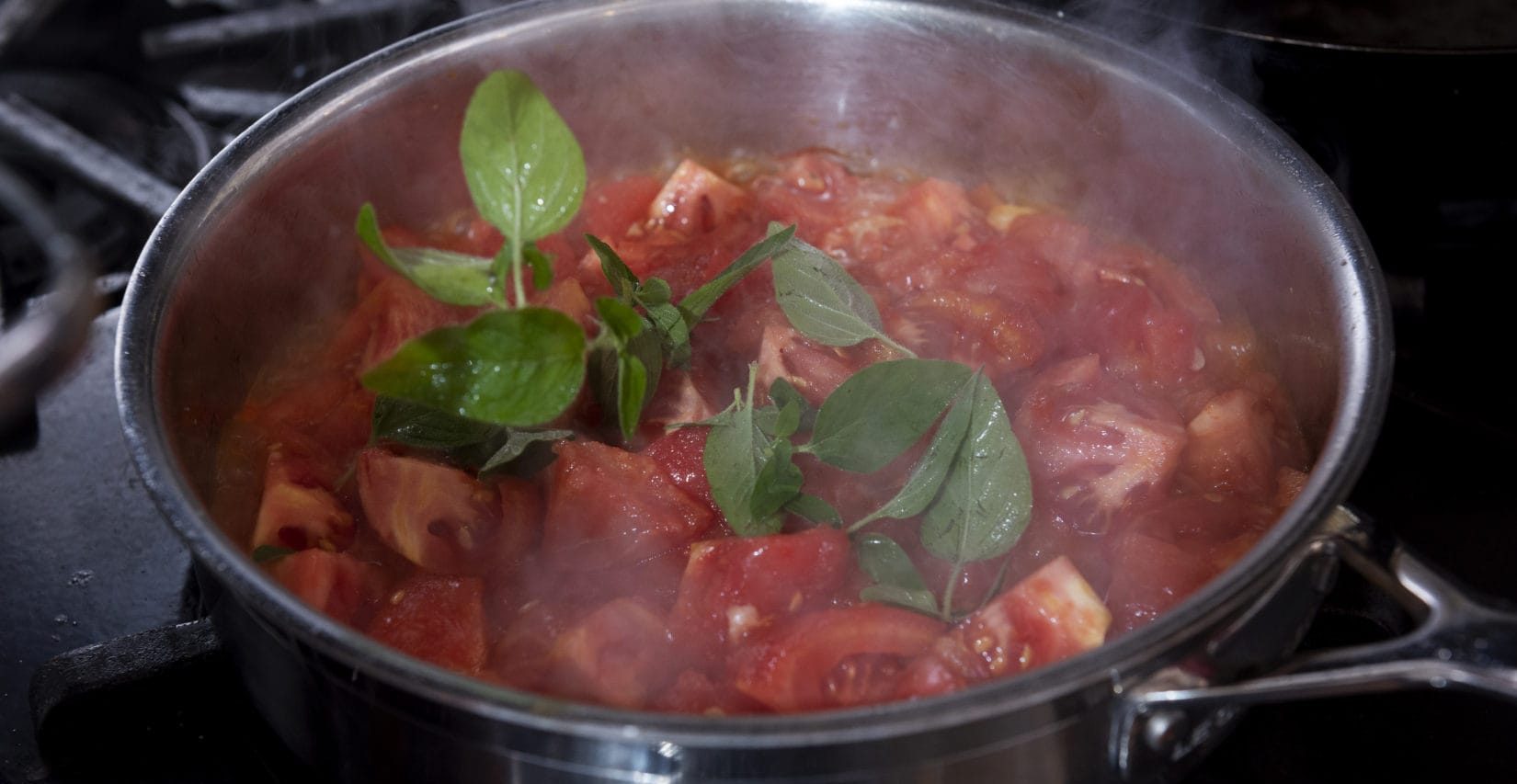
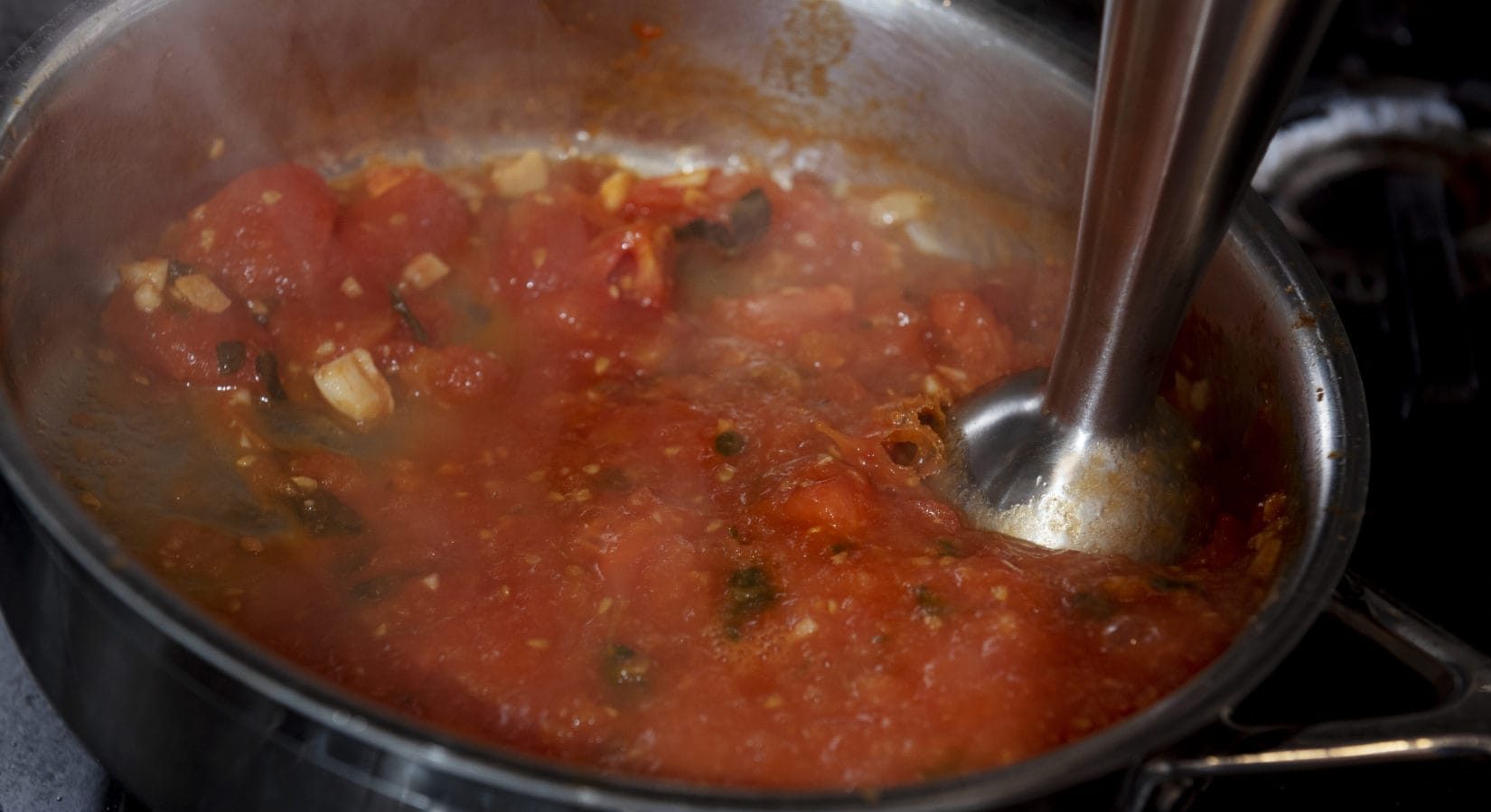
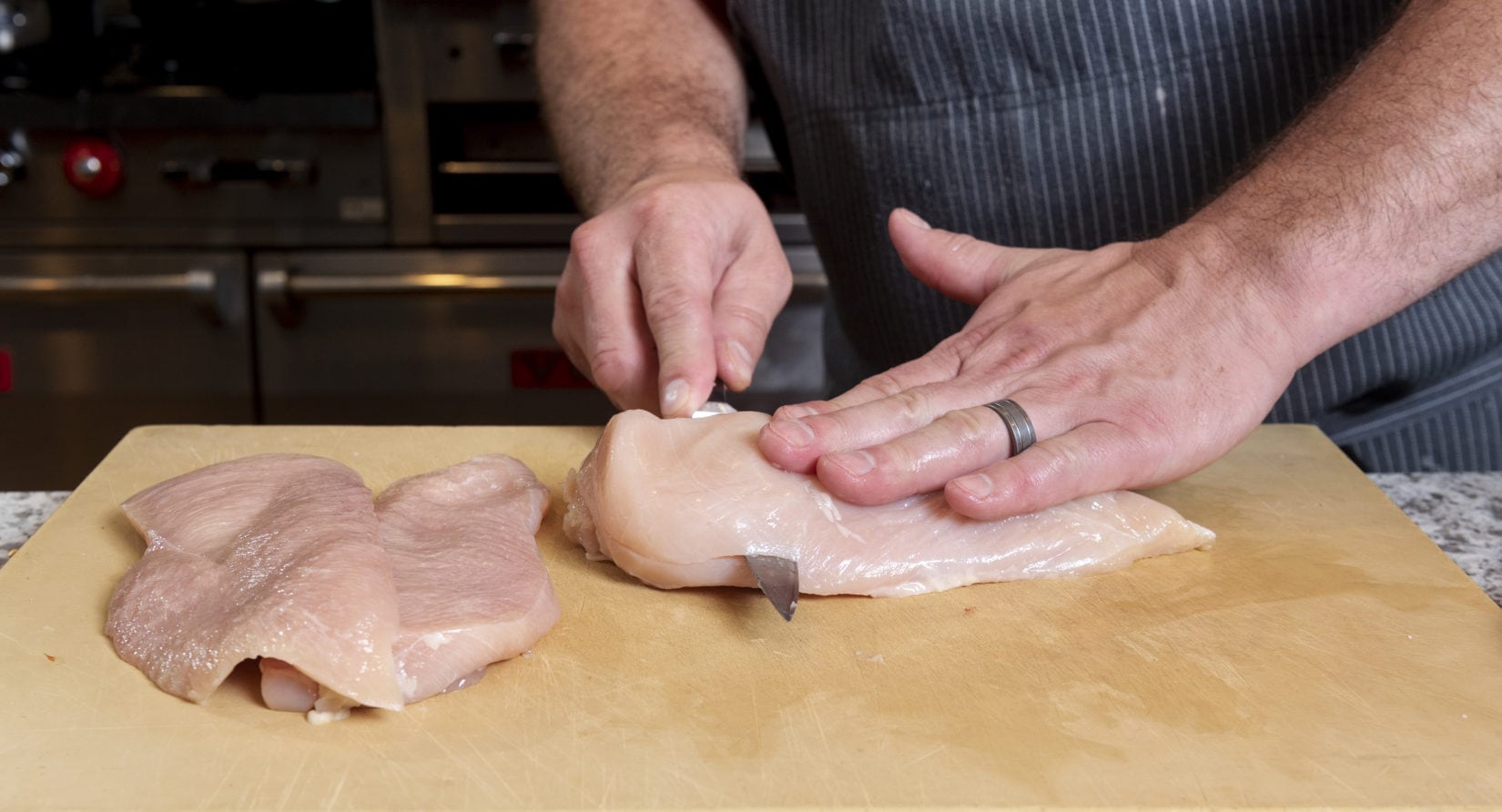
Cutlet
I like to split the chicken breast in half and then pound slightly. Use a meat mallet or small sauté pan to help tenderize the meat. The chicken breast is pretty tender on its own but using the mallet will also help you achieve an even thickness throughout. You can do the cutlets a day or two ahead to help save time.
Breading
I like using a standard breading procedure: seasoned flour (salt, pepper, herbs, maybe some ground pepper flakes), egg wash (about 6 to 8 ounces of milk or water per egg with a little salt and pepper), then finish with breadcrumbs (I like using a course panko breadcrumb, but any breadcrumb will work). I like using parmesan to make up about 1/4 to 1/3 of the volume of the final breading. This gives it a great flavor and texture. When you are getting ready to bread, have all of your ingredients out and ready. Have a place for the seasoned meat, the three breading ingredients, and a place to put your breaded product. Make sure that your meat is prepared and seasoned. Lightly coat the meat in flour and shake off all the excess (the hand you use is now your “Dry Hand”). Place the meat into the egg wash and using the other hand (this is now your “Wet Hand”), making sure the flour on the meat has been thoroughly coated and let all of the excess drip off. Place the meat into the breadcrumbs and use your “Dry Hand” to toss a bit of breadcrumb on top. Coat the cutlet slightly allowing you to flip the meat once or twice and press firmly until the breadcrumb mixture sticks to the egg wash on the meat. Shake off all of the excess breading and place on to a final tray until you are ready to fry. The breaded cutlets can sit for 20 to 30 minutes at room temperature, if you need to wait longer than that, they can stay in the refrigerator for 2 to 3 hours. Longer than that it is best to freeze them until you are ready to fry. The cutlets should be frozen uncovered on a tray for an hour or two, then transferred to a Ziploc bag or other sealed container. They can store in the freezer for a month or two.
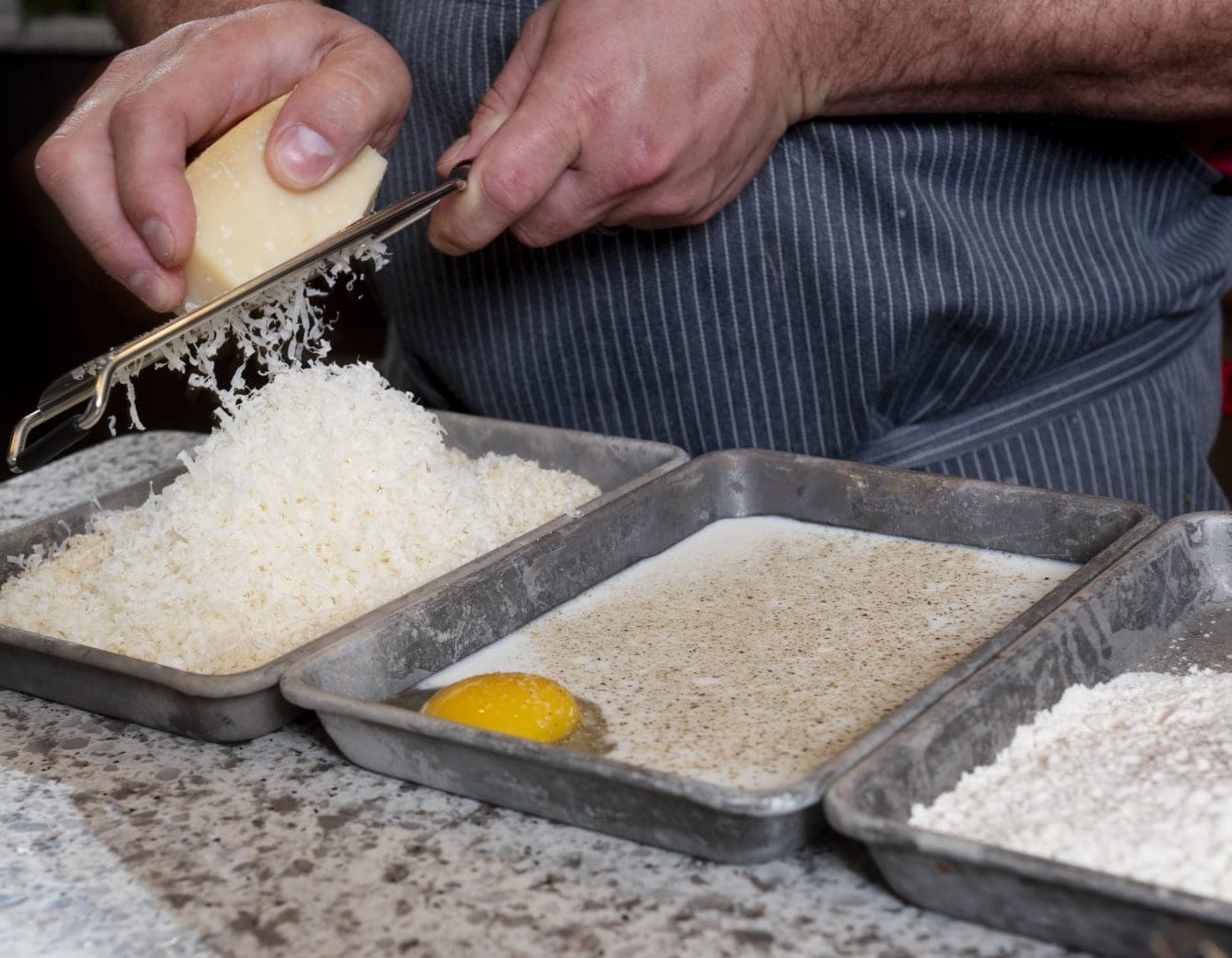
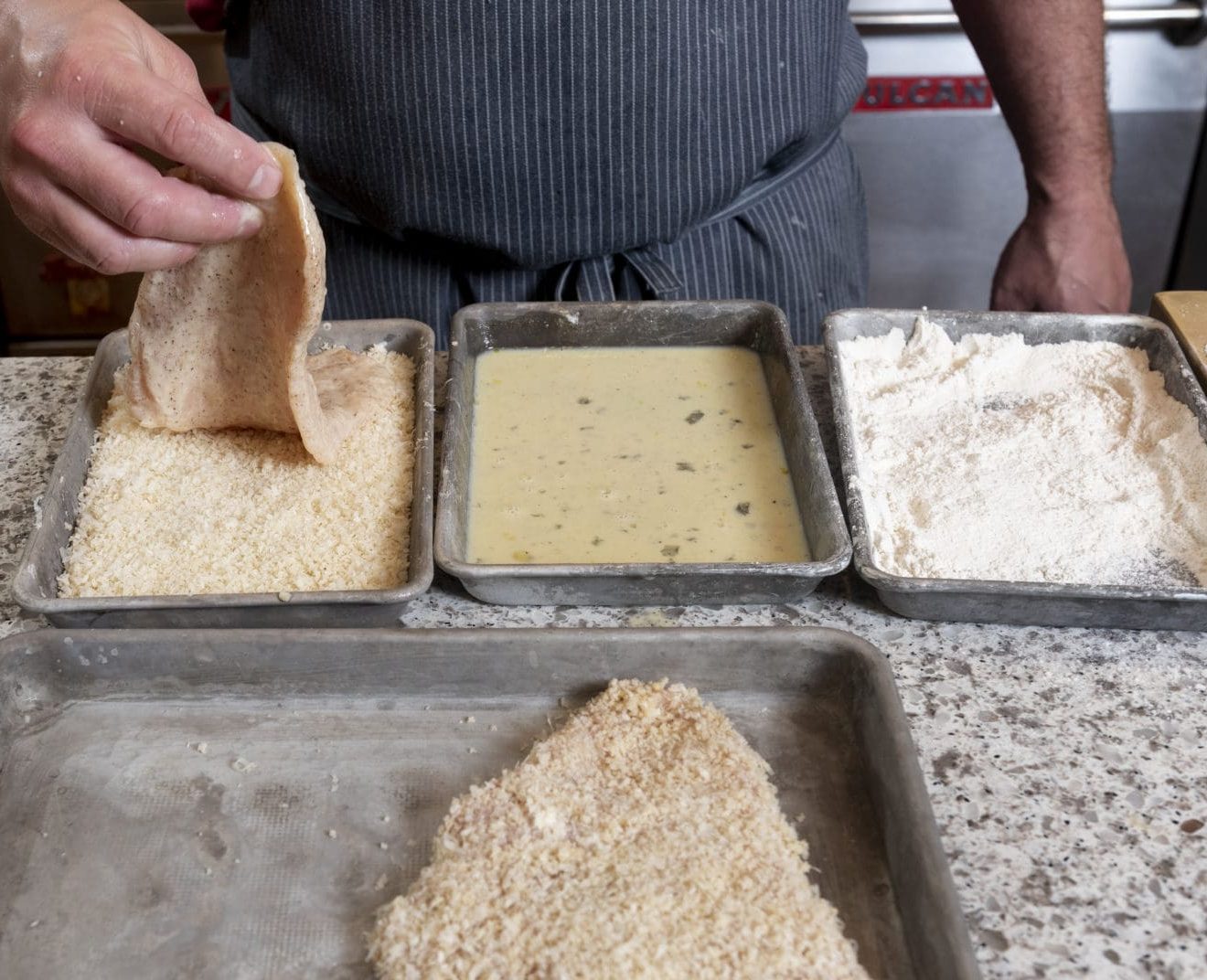
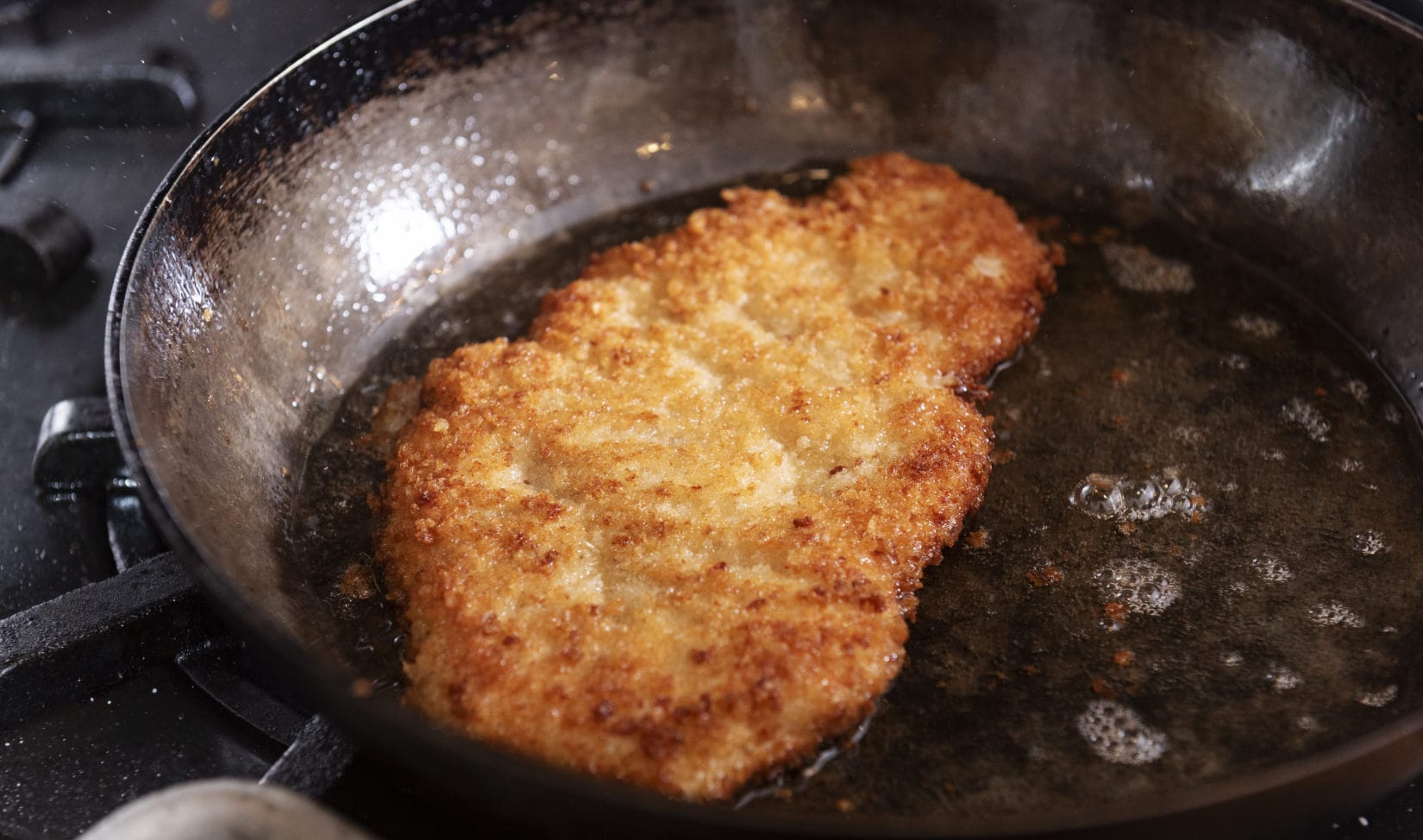
Frying
Most of the time I prefer to pan-fry the final product. You only need a small sauté pan and enough oil or fat to come at least halfway up the cutlet. If you are making a large quantity of chicken parmesan or making mini chicken parmesan sandwiches (same as the normal procedure, but served on a slider bun), you may be better off deep frying the cutlets. If pan-frying, have your oil over medium-high heat (about 1/4 to 1/2 inch of oil). Dip the corner of a breaded cutlet into the hot oil. It should bubble steadily, but not out of control. If the bubbles are too low, let the oil heat longer. If the bubbles are too high, turn off the heat and allow the oil to cool for a bit and try again. Fry each side of the cutlet until golden brown, remove and reserve. Drain the oil and place the fried cutlets back into the pan or use a separate dish. Place a large dollop of tomato sauce on top of each cutlet and spread around. Top the sauce with sliced fresh mozzarella cheese and season lightly with salt. You can also use aged low moisture mozzarella cheese (it will brown a little easier).
Bake or Broil
Now that you have your cutlet topped with sauce and cheese you can decide if you want to bake or broil. Browning the cheese will take a tremendous amount of heat. You want to turn your broiler or oven on before you even start to fry the cutlets. This will allow ample time for it to heat. If broiling, turn to high and place the cutlets with sauce and cheese below for 30 seconds to 3 minutes depending on the strength of your broiler. You want to see the cheese bubbling and becoming spotted with brown. In the oven, turn to 450 degrees and place the pan with cutlets on the top rack for 3 to 5 minutes until the cheese is bubbling and is spotted with brown.
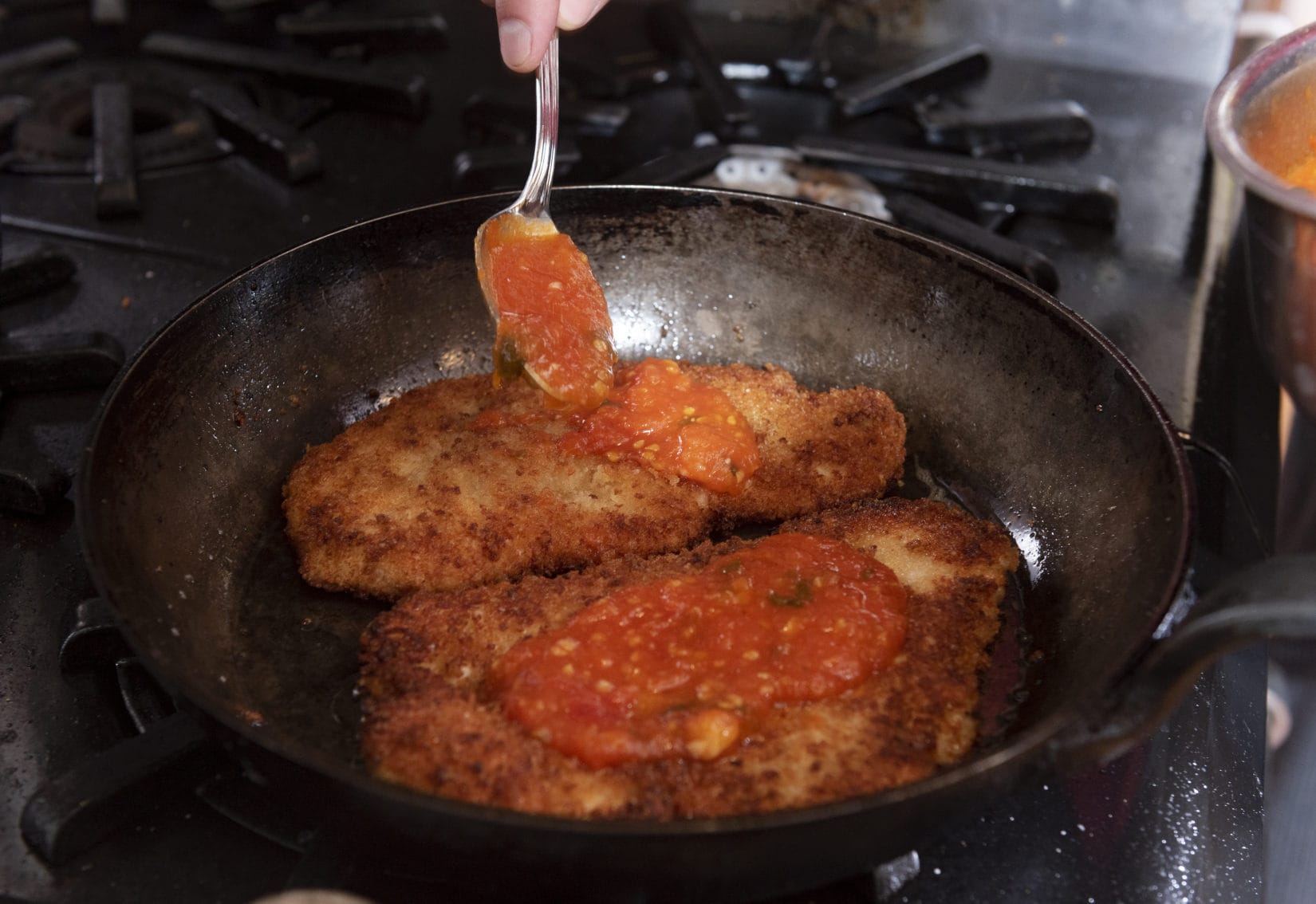
Variations
Substitute veal chop or shoulder for chicken. Mallet may be more necessary for tenderization with the shoulder.
Substitute peeled and sliced eggplant for chicken. Slice the eggplant lengthwise into ½-inch wide pieces. Heavily salt for 20 minutes, then rinse and season as normal to remove excess moisture.
Tomato Sauce
2 tablespoons olive oil
3 to 4 cloves of garlic, smashed and roughly chopped
1 teaspoon red pepper flakes (optional)
¼ cup sugar (optional)
Salt and pepper to taste
Halve tomatoes and core, place under a broiler on high heat or 450˚ oven until the skins blister and start to slide off. Cool tomatoes and remove skin, crush tomatoes slightly with hands. Sauté garlic over medium heat until just aromatic, not brown. Add tomatoes, herbs and other ingredients desired, season lightly with salt and pepper. Cook over medium heat, turning heat lower as needed until most of the moisture has cooked away. Use a hand blender or transfer to a tabletop blender and pulse lightly to the desired texture. Season as needed with salt and pepper. Reserve until needed.
Chicken Parmesan
½ cup flour
1 egg
¾ cup milk
½ cup parmesan with breadcrumbs
Salt, pepper, herbs and spices as desired
8 to 10 ounces fresh mozzarella (for topping)
Halve chicken breast horizontally from the thick part at the top to the tip. Pound each piece between plastic wrap or parchment paper until about ¼- to ½- inch thick. Season each “cutlet” lightly with salt and pepper. Coat lightly in seasoned flour and shake off all excess. Coat lightly in egg wash (egg and milk) and shake off all excess. Coat in the mixture of breadcrumbs and parmesan and press into the meat to help adhere. Shake off all excess and reserve until ready to fry. Fry until golden brown and reserve. Place sauce on top of each cutlet and spread through the center. Top with mozzarella cheese and season lightly with salt. Bake or broil until the cheese is bubbling and golden brown spots appear. Serve over buttered noodles or accompaniments of your choice.
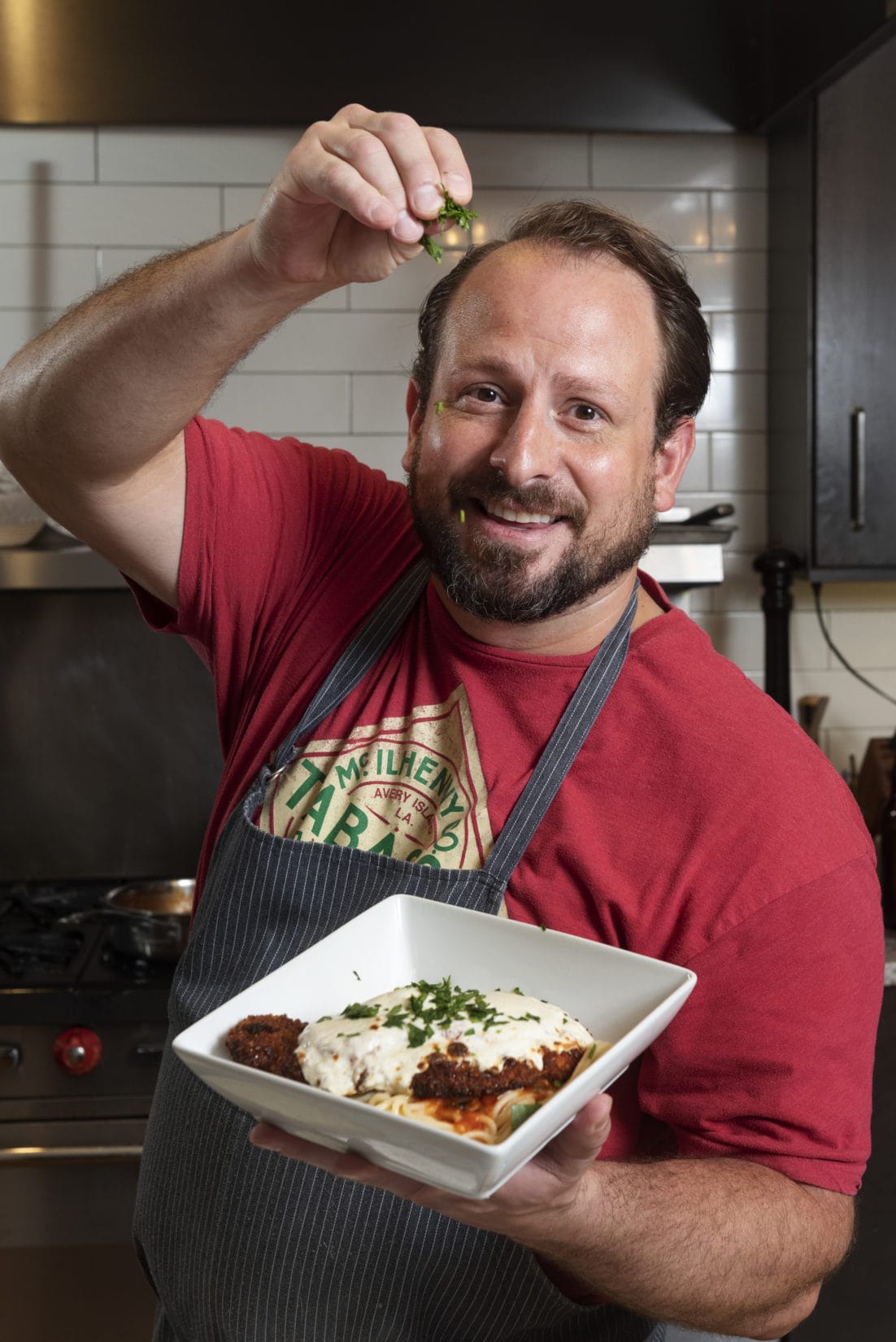
Brook Harlan is a graduate of the Culinary Institute of America in Hyde Park, New York. He is a culinary arts instructor at the Columbia Area Career Center.


